Exploring Hampi
The 10 Best Things to Experience
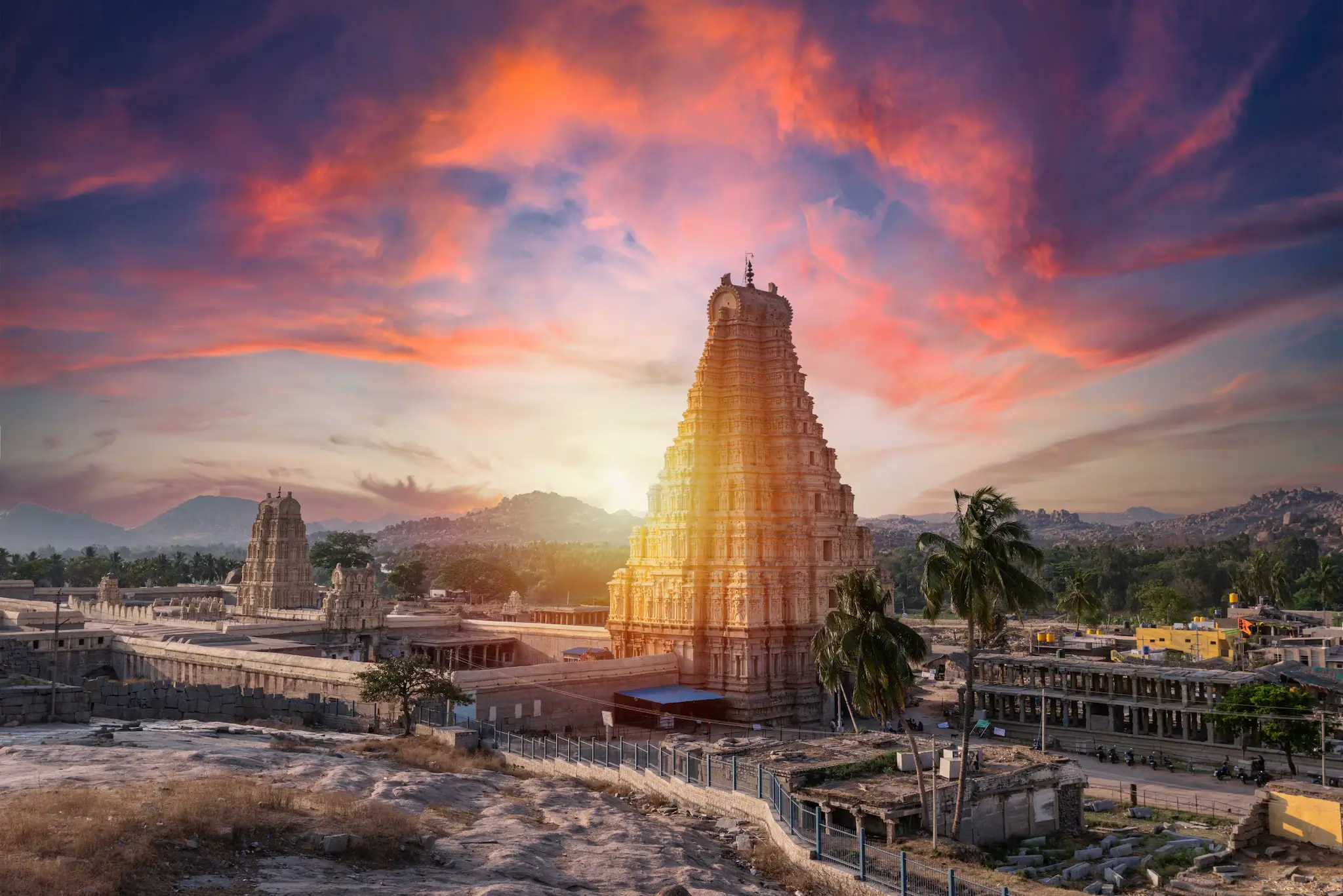
Historical Significance and Architectural Marvels
The Virupaksha Temple, nestled in the heart of Hampi, stands as a testament to ancient Indian culture. It is one of the oldest functioning temples in India. Constructed in the 7th century, it has been a center of religious activities for centuries. Its towering gopuram, the main gateway, reaches up to 50 meters, an impressive feat of medieval engineering.
The temple is adorned with intricate carvings and sculptures that depict stories from Hindu mythology. These artistic elements showcase the skill and creativity of the artisans of that era. Each sculpture tells a unique tale, inviting visitors to delve into the rich tapestry of history.
Religious Practices and Cultural Celebrations
The temple is not just a historical monument but also a vibrant place of worship. Daily rituals and ceremonies are conducted with utmost devotion. The temple hums with the sounds of chants and bells, creating a serene atmosphere. Visitors can witness the priests performing traditional rituals, an experience that connects the past with the present.
Virupaksha Temple is renowned for its annual festivals, which draw devotees from across the country. The most notable is the Virupaksha Car Festival, a grand event celebrated with fervor and color. These festivals offer a glimpse into the local customs and traditions, making it a must-visit for anyone exploring Hampi. Immerse yourself in the cultural richness and spiritual ambiance of this ancient temple.
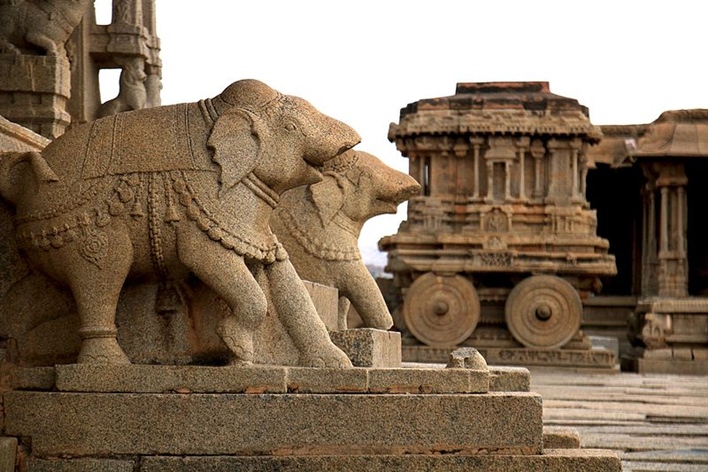
The Iconic Stone Chariot and Musical Pillars
One of the most renowned attractions within the Vittala Temple Complex is the iconic stone chariot. This chariot is celebrated for its intricate design and craftsmanship. It stands majestically in the temple courtyard, capturing the brilliance of the Vijayanagara artisans. Tourists and art enthusiasts flock here to admire its architectural beauty. The chariot symbolizes cultural and religious significance in the region. Its detailed carvings tell stories from the past, providing insight into the vibrant history of Hampi.
Equally fascinating are the musical pillars located within the temple. These pillars are famous for producing musical notes when struck. They are a testament to the architectural genius of the era. Each pillar emits a unique sound, contributing to a symphony that resonates through the temple. The presence of these pillars highlights the advanced understanding of acoustics during the Vijayanagara period. These musical pillars continue to intrigue visitors, combining art with science.
The Splendor of Vijayanagara Architecture and the Landscape
The Vittala Temple Complex showcases the grandeur of Vijayanagara architecture. Its elaborate carvings and majestic halls reflect the pinnacle of artistic achievement. The temple's design emphasizes symmetry and proportion, hallmarks of the architectural style. Visitors can marvel at the richly decorated pillars and expansive mandapas. Each structure within the complex offers a glimpse into the opulence of the empire.
Surrounding the temple is a landscape of breathtaking natural beauty. The terrain is dotted with boulders and lush greenery, creating a picturesque setting. The Tungabhadra River flows nearby, adding to the serene ambiance of the area. As you explore the Vittala Temple, the surrounding environment enhances the experience, offering a tranquil escape into the heart of nature. This blend of architectural brilliance and natural beauty makes the Vittala Temple Complex a must-visit destination in Hampi.
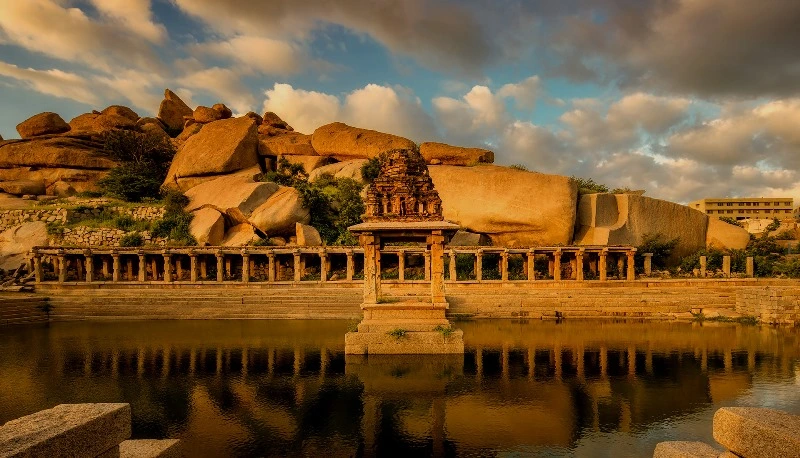
Discover Local Handicrafts and Souvenirs
The Hampi Bazaar is a vibrant tapestry of colors and sounds. Vendors display an array of local handicrafts that captivate tourists. From intricately carved wooden artifacts to beautifully woven textiles, the variety is immense. Visitors can find unique souvenirs that reflect the rich cultural heritage of the region. Silk scarves, pottery, and jewelry are popular among travelers. Each piece tells a story, crafted with skill passed down through generations.
Walking through the bazaar is an experience of sensory delight. The scent of spices lingers in the air as you explore. Artisans often demonstrate their craft, offering a glimpse into their creative processes. Engaging with these skilled craftsmen provides a deeper appreciation for their work. They share stories of tradition and technique, enhancing the cultural experience.
Taste Cultural Delicacies and Explore Historical Connections
The bazaar is not just about shopping; it's also a culinary adventure. Street food stalls line the pathway, offering a taste of local flavors. Samosas, dosas, and chutneys entice visitors with their aroma and taste. Sampling these delicacies is a must for any food enthusiast. Each bite is a reflection of the region's culinary diversity and richness.
Hampi Bazaar has historical significance as part of ancient trade routes. It was once bustling with merchants from various lands exchanging goods. This history adds depth to the current shopping experience. Today, the bazaar retains its charm, drawing parallels between past and present. Interacting with vendors offers insight into how trade has shaped the area. They are keen to share stories of how their wares connect with this rich history.
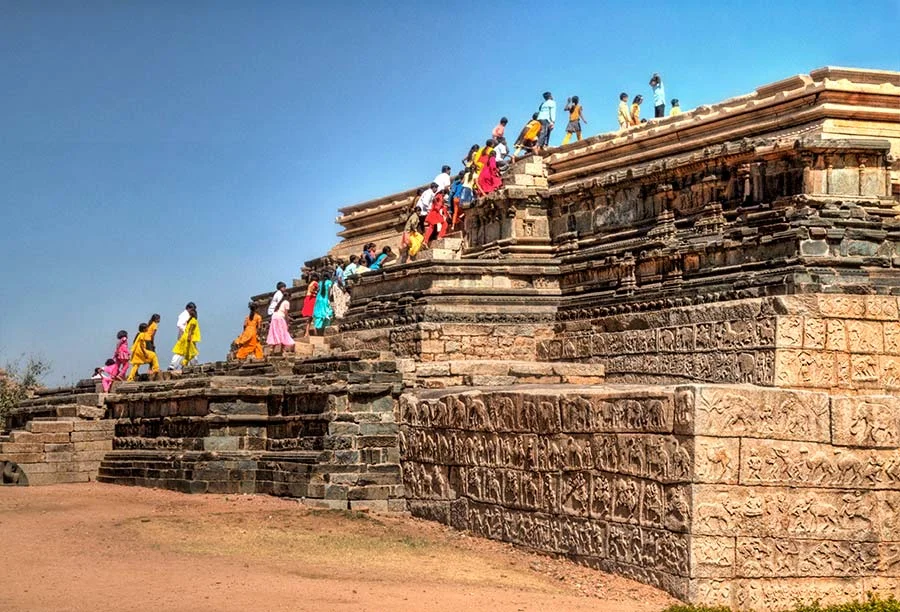
Historical Context and Significance
The Royal Enclosure of Hampi is a sprawling area which once served as the seat of power for the Vijayanagara Empire. This empire, thriving in the 14th to 16th centuries, was one of the most powerful in South India. The enclosure covers a vast area of about 59,000 square meters. It served as the epicenter of political and ceremonial activities. The space was filled with grand palaces, majestic pavilions, and strategic watch towers, symbolizing the empire's grandeur and might.
Understanding the Royal Enclosure provides insight into the hierarchical and sophisticated lifestyle of the Vijayanagara rulers. Archaeological evidence suggests the enclosure was meticulously planned, integrating advanced water systems and secretive underground passages. The layout reflects the empire's emphasis on security and grandeur, portraying the architectural ambition and sophisticated urban planning of its time.
Key Structures and Archaeological Insights
Within the Royal Enclosure, visitors can explore many key structures, each narrating tales of the past. The Lotus Mahal, known for its delicate carvings and Indo-Islamic architecture, stands out as an architectural marvel. Its unique design facilitated the circulation of air, maintaining a cool interior despite the scorching heat outside. Another notable structure is the Mahanavami Dibba, a raised platform used for royal ceremonies. This massive structure offers panoramic views of the surrounding area, further emphasizing its strategic importance.
Archaeological efforts have revealed much about the Royal Enclosure's past. Excavations have unearthed intricate stone carvings, remnants of ancient roads, and defunct drainage systems. Restoration efforts aim to preserve these discoveries, allowing historians and tourists to witness the grandeur of the Vijayanagara period. These efforts are crucial in keeping alive the cultural heritage, providing a window into the social, political, and architectural advancements of the time. The Royal Enclosure remains a testament to the innovative spirit and cultural richness of the Vijayanagara Empire, offering invaluable insights into the region's illustrious past.
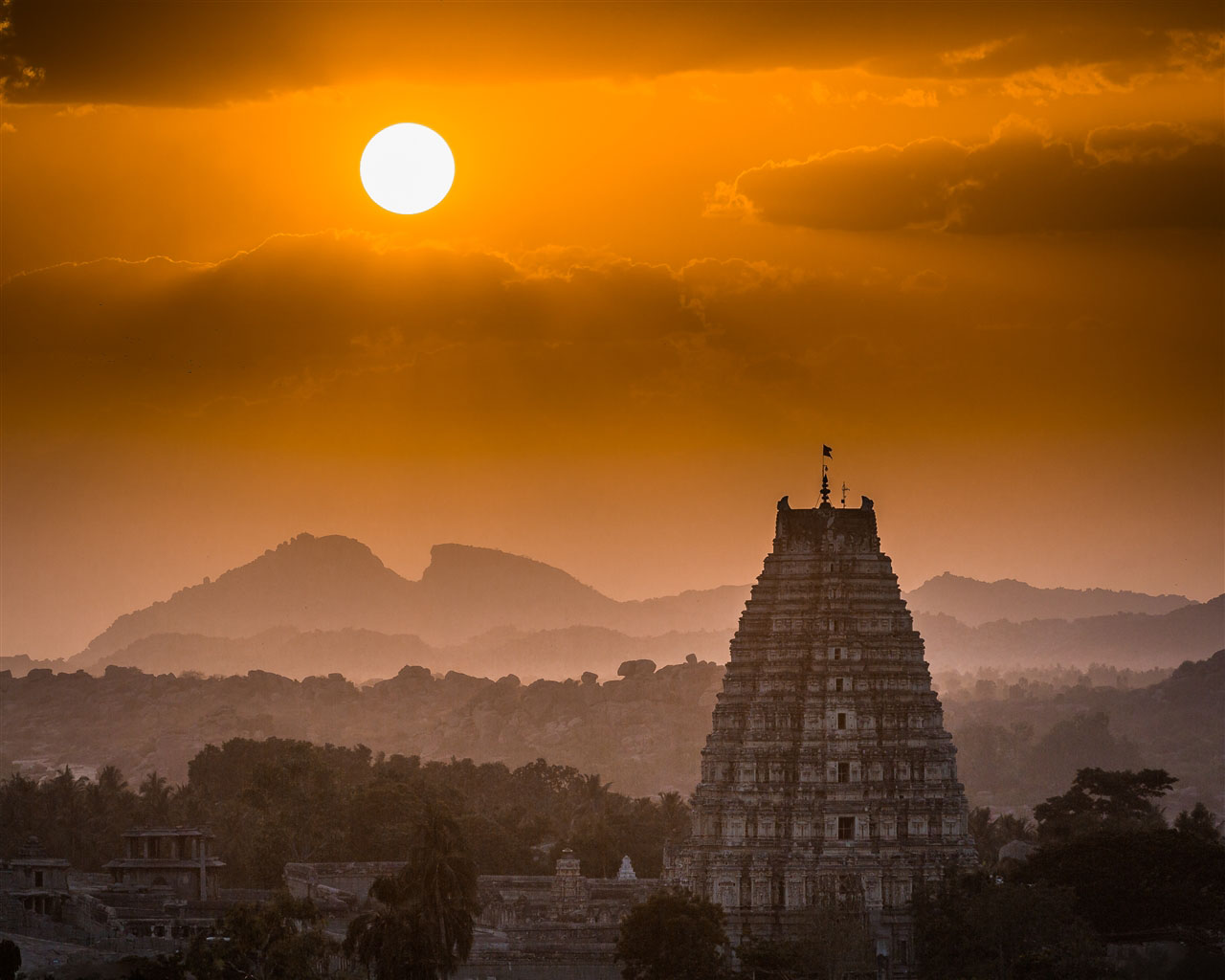
Breathtaking Views and Mythical Significance
Matanga Hill offers stunning panoramic views over Hampi. From the summit, the vast expanse of the ancient city unfolds. Visitors often describe the scenery as breathtaking. The hill is also a spot steeped in mythology. According to local lore, it is the site where Lord Hanuman's mother, Anjana, is said to have meditated. This connection adds a layer of spiritual significance to the hike. For those interested in mythology, the hill holds many tales waiting to be discovered.
The landscape visible from the top includes the Virupaksha Temple and the Tungabhadra River. These views are especially prominent at sunrise or sunset. The light at these times enhances the natural beauty of Hampi. Photographers find these moments ideal for capturing the landscape's changing hues. The ancient rock formations and temples create a perfect backdrop. Many visitors aim to reach the top early to enjoy the calm morning light.
Optimal Hiking Times and Unique Wildlife
Hiking to Matanga Hill is best in the early morning or late afternoon. During these times, the temperature is cooler. This makes the ascent more comfortable. The trail is rocky but not too strenuous. Hikers are rewarded with sweeping views as they progress. Carrying water is important, as the sun can be intense even at these times. Comfortable footwear and a hat are also recommended.
The hill is home to unique flora and fauna. Hikers might encounter several bird species along the way. Some are endemic to the area. The flora includes various shrubs and small trees, adapted to the rocky terrain. These natural features provide an added interest to the hike. Observant visitors may also spot monkeys or lizards on the rocks. Respecting wildlife is crucial. Keeping a safe distance helps preserve the natural environment.
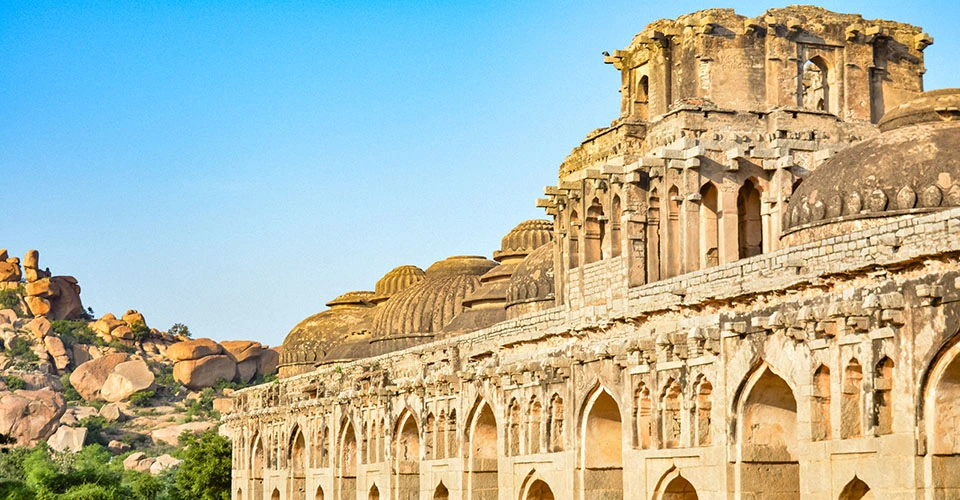
Architectural Grandeur and Historical Significance
The Elephant Stables in Hampi stand as a testament to the grandeur of the Vijayanagara Empire. This historical monument showcases the architectural brilliance of its time. The stables are a rectangular structure divided into eleven domed compartments. Each compartment is spacious and intricately designed, highlighting the fusion of Hindu and Islamic styles. This architectural layout reflects the cultural synthesis that thrived during the Vijayanagara period.
The significance of the Elephant Stables transcends beyond their architectural magnificence. They offer a glimpse into the past, where elephants played a crucial role in the royal court. These majestic animals were symbols of power and prestige. They were integral to military processions and royal ceremonies, showcasing the might and wealth of the empire. The stables, thus, served as both practical and symbolic structures in the royal complex.
Preservation Efforts and Wildlife Encounters
Over the years, preservation efforts have maintained the condition of the Elephant Stables remarkably well. Despite the passage of time, the stables remain largely intact, allowing visitors to appreciate their original splendor. Ongoing conservation initiatives ensure that the structure continues to stand firm, offering insights into the past for future generations.
The area surrounding the Elephant Stables is rich in natural beauty, providing an opportunity for potential wildlife sightings. The lush greenery and serene environment attract various species of birds and small mammals. Visitors may spot peacocks or hear the calls of exotic birds, enhancing the experience of exploring an ancient site. The blend of architectural heritage and natural beauty makes the trip to the Elephant Stables a memorable one.
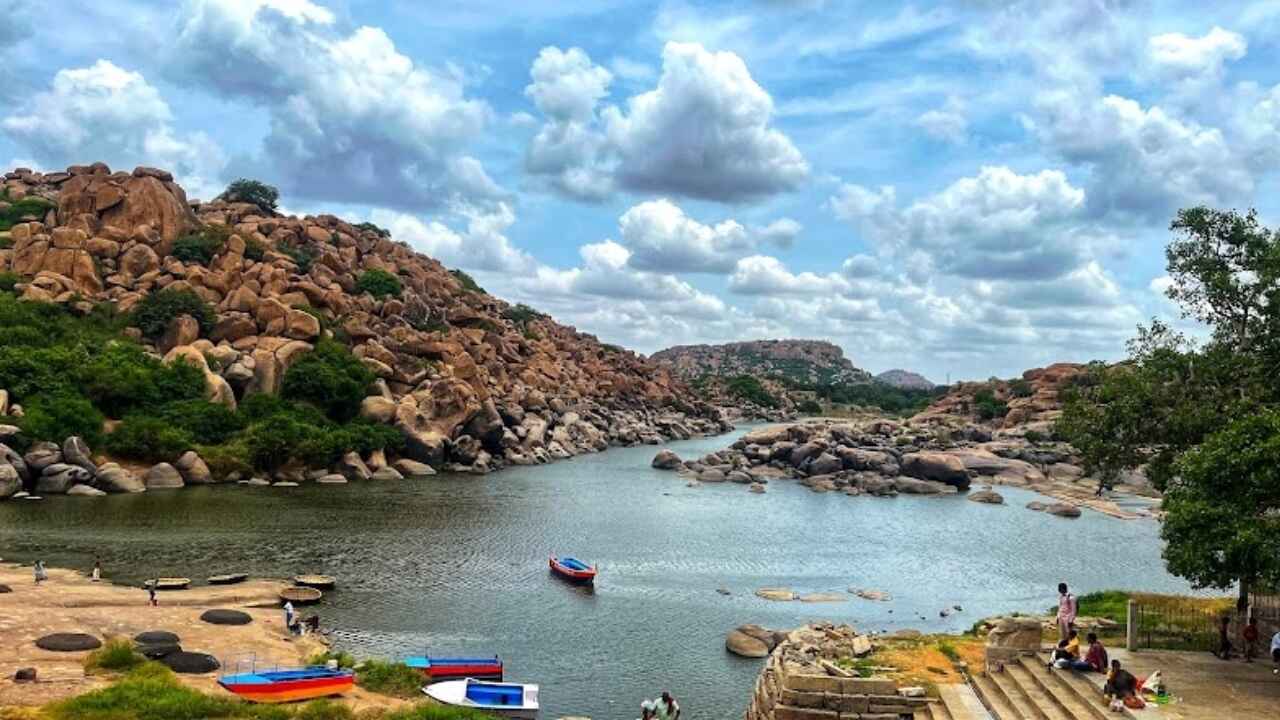
Overview and Historical Relevance
The Riverside Ruins in Hampi present a captivating glimpse into the past. These ruins, now remnants of a once-thriving civilization, speak of the region's rich history. These structures, scattered along the riverbanks, tell stories of a bygone era. They showcase the architectural prowess of the Vijayanagara Empire. The ruins, made of stone, reflect the artistry of ancient times. Each piece holds historical significance. Visitors can explore the remnants of temples, pavilions, and ancient water structures.
The area around the Riverside Ruins was vital to the ancient city's economy. It served as a hub for trade and religious activities. The ruins demonstrate intricate carvings and well-designed structures. These features highlight the high level of craftsmanship. The Riverside Ruins are a testament to the ingenuity and vision of the past. They are a key destination for history enthusiasts and casual explorers alike.
Scenic Beauty and Walking Trails
The Riverside Ruins are set against a backdrop of stunning natural beauty. The Tungabhadra River meanders gracefully through the landscape. The riverbanks are adorned with lush greenery, creating a serene atmosphere. The sound of the flowing water adds a calming effect. Visitors can enjoy scenic views and captivating vistas at every turn. The area is perfect for leisurely walks and quiet reflection.
Numerous walking trails weave through the Riverside Ruins. These trails lead adventurers to hidden gems and secluded spots. Explorers can discover ancient inscriptions and carvings along the way. Some trails connect to the ancient water management system. This system was crucial for sustaining the city's population and agriculture. It is a marvel of engineering that remains impressive even today. The trails offer a unique way to understand the significance of water in ancient Hampi's daily life and economy.

History and Significance of Hampi's Fortifications
The fortifications in Hampi stand as a testament to its rich past. Built during the Vijayanagara Empire, these structures were crucial for defense. The massive walls, crafted from granite blocks, showcase the ingenuity of ancient engineers. Their strategic placement reflects the empire's need to protect its wealth and culture from invaders. The fortifications encircle the city, with bastions and watchtowers marking key points. These features highlight the importance placed on vigilance and security.
Hampi was a thriving capital, teeming with trade and culture. It was imperative to safeguard this prosperity. The fortifications played a vital role in achieving this goal. The walls not only deterred attacks but also served as a symbol of strength. They provided refuge during sieges, ensuring the continuity of life within. For anyone exploring Hampi, understanding the history of these defensive structures adds depth to the experience.
Routes and Vantage Points
Exploring the fortifications involves traversing well-trodden paths and hidden trails. Several entry points offer access to different sections of the walls. The renowned Riverside Route allows visitors to walk alongside the Tungabhadra River, presenting a unique view of the fortifications. Alternatively, the Matanga Hill trek provides a more challenging climb. From the summit, the sprawling network of walls can be seen in its entirety, revealing their strategic placement.
Climbing to elevated vantage points grants breathtaking views of Hampi's landscape. The fortifications, when viewed from above, reveal the complexity of their design. The hills surrounding the area offer panoramic vistas, with the remnants of the ancient city stretching across the horizon. These views not only offer a glimpse into the past but also underscore the natural beauty surrounding Hampi. For any traveler, this exploration promises a rich blend of history and stunning scenery.

Activities and Experiences by the River
Boating on the Tungabhadra River offers a serene escape from the busy streets of Hampi. Glide along the calm waters while enjoying views of ancient temples and lush landscapes. For those who prefer land-based leisure, the river’s banks are ideal for picnicking. Spread a blanket under the shade of a tree and relish simple pleasures. Listen to the gentle flow of water and chirping birds.
The river is a hub for cultural rituals and practices. Observing these traditions provides insight into local life. Ritual baths and offerings are common here, especially during festivals. Join in or watch respectfully as locals engage in age-old practices by the river's edge.
Scenic Spots and Biodiversity
The Tungabhadra River is flanked by numerous scenic spots perfect for photography. Capture the river’s reflections at sunrise or sunset. These golden hours offer photographers a rich palette of colors. The landscape features rocky outcrops and lush greenery, making each photo a masterpiece.
Wildlife enthusiasts will appreciate the biodiversity around the river. Spot various bird species flitting between trees or gliding over the water. Lucky visitors might glimpse an otter or a langur. The river and its surroundings are a sanctuary for many creatures, offering countless moments of discovery.
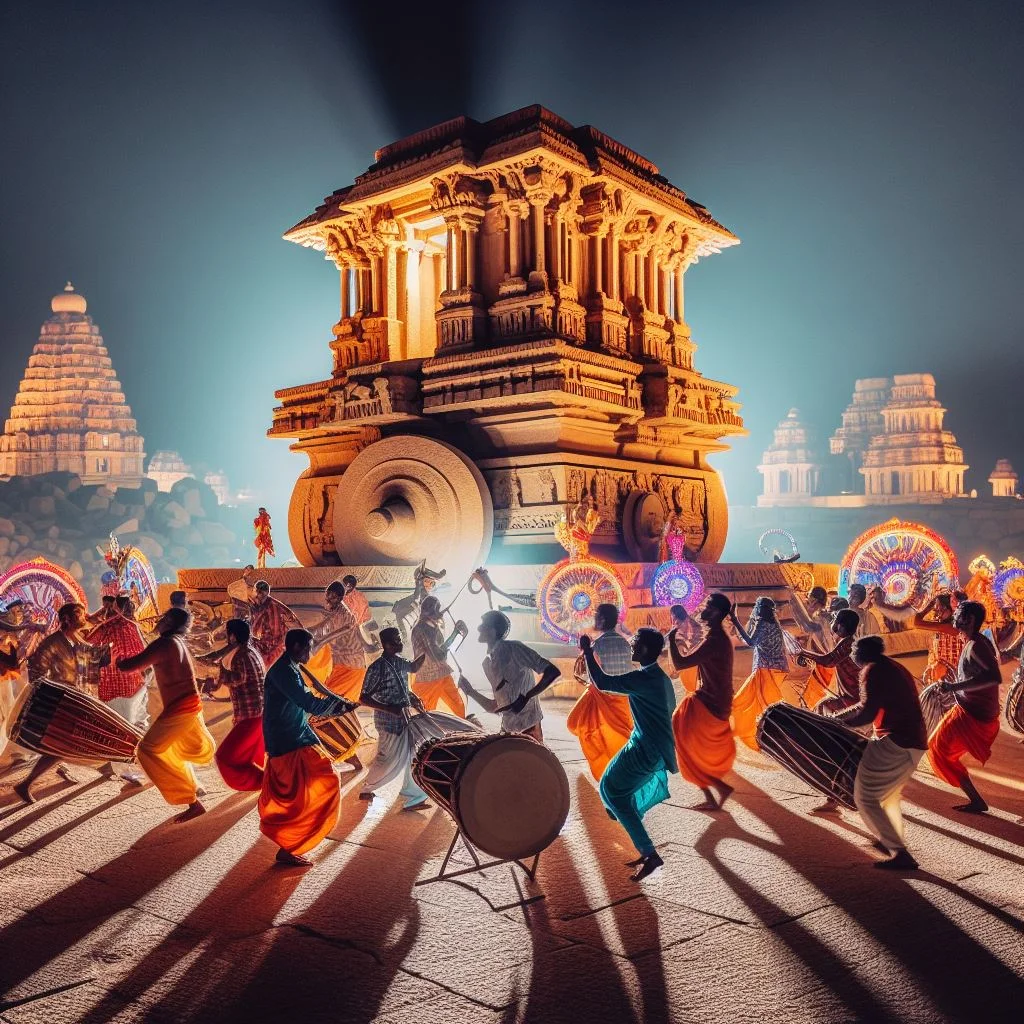
Participate in Local Festivals and Events
Hampi is a vibrant locale with a rich cultural tapestry. When exploring, one mustn't miss the chance to partake in local festivals. Hampi Utsav is a grand festival celebrating the history and culture of this ancient town. It features elaborate processions and performances. Colorful parades and robust dance performances bring the streets to life. Participating in these festivals offers a glimpse into the community's heritage and their vibrant way of life.
In addition to Hampi Utsav, smaller events occur throughout the year. Villages nearby often celebrate seasonal festivals unique to their traditions. Visitors are welcomed to join in and celebrate alongside locals. This offers a unique opportunity to understand the area’s rich traditions. Engaging with these events provides insight into the communal spirit and time-honored traditions of the people of Hampi.
Experience Traditional Dance, Music, and Cuisine
Traditional dance and music are integral to understanding Hampi’s culture. The town hosts many performances that showcase these art forms. Classical dance performances often depict tales from Hindu epics. This offers audiences a chance to witness the stunning art of story-telling through dance. Traditional music, played on ancient instruments, complements these performances beautifully.
Food is another window into local culture. Hampi offers food tasting tours that let visitors savor the local cuisine. These tours guide you through markets filled with aromatic spices and fresh produce. Sampling authentic dishes like Bisi Bele Bath and Ragi Mudde is a must. This culinary journey allows you to explore the flavors and techniques unique to this region.
Interacting with local communities enriches these experiences. Conversations with residents reveal personal stories and insights into daily life. Engaging deeply with the culture while tasting its cuisine offers a fuller, richer exploration of Hampi’s heritage.